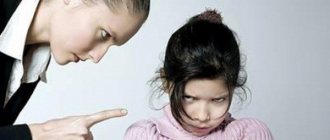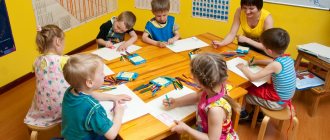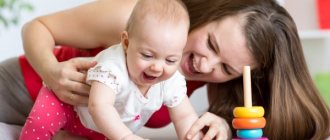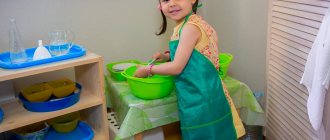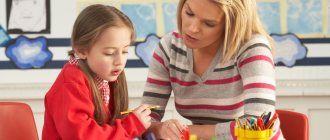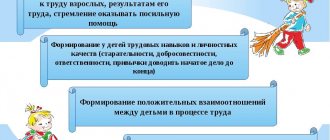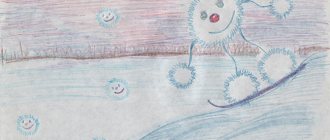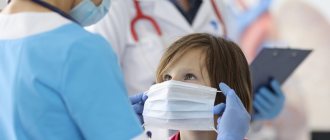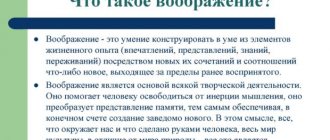If sports exercises are muscle training, then hardening is immunity training, primarily the thermoregulatory apparatus. A hardened child easily tolerates significant temperature fluctuations. He is not at risk of hypothermia and overheating, which can lead to colds and other diseases. To achieve a positive result, when hardening you must adhere to certain rules and principles. What types and methods of hardening children exist and how to properly carry out these strengthening and health-improving activities?
The deteriorating environmental situation and changing lifestyles lead to the fact that modern children often get sick. One of the most effective and yet affordable ways to maintain and improve health is hardening. There are several methods of hardening; you can use one of them or combine several at once. Let's look at what methods of hardening children exist, and also get acquainted with the basic rules for carrying out these procedures.
Methods of hardening children
Depending on the main hardening factors, experts distinguish:
- aerotherapy (hardening in air);
- hardening with water;
- heliotherapy (sun hardening).
Air baths
The basis of aerotherapy is taking air baths and walking in the fresh air. This is one of the most gentle hardening options, so it’s worth starting training the body with it. The maximum effect of aerotherapy is achieved in combination with sports activities. Tempering sessions can be carried out at home (open a window or window to ventilate the room and engage in simple physical exercises with your baby) and outdoors (arrange a short race or active games in the yard). It is recommended to start air hardening from +20–16°C, gradually reduce the temperature to +14°C.
Hardening children with water
A more intensive method of hardening is water procedures, which can be carried out in an ordinary city apartment. The most convenient time for water hardening is considered to be early in the morning: accustom your baby to a refreshing shower immediately after getting up or, even better, after morning exercises. Start strengthening procedures at 35°C and gradually reduce the water temperature to 10°C.
Hardening children with water can be done in several ways. At the initial stage, the wiping procedure is suitable - this is where you need to start training. Undress your baby to the waist and wipe his neck, chest, back and arms with a damp sponge. After this, rub your body dry with a towel - all this must be done within 5 minutes. After several procedures, you can begin rubbing the entire body - from head to toe.
After preparation by wiping, the child can be transferred to the next stage - dousing with water. At first, you can pour only the legs, and then gradually increase the area of contact with water. When the baby gets used to local douches, accustom him to hardening in the shower - use cool water and a contrast shower for this. Remember: the cooler the water, the shorter the dousing time (1-2 minutes). At the end of the water session, rub your body until it turns red.
The apogee of water hardening is winter swimming - this procedure must be approached with extreme caution and under regular medical supervision.
Sun
Infrared and ultraviolet rays of the sun in a reasonable amount have a beneficial effect on the human body. They help improve the body's thermoregulation, and also help improve blood circulation and the production of vitamin D. Sun hardening involves taking short-term sunbathing in the morning (preferably before 10 am), starting with 5-minute sessions.
Another common hardening method is walking barefoot on wet grass and snow. This option is suitable for those who live in their own house, near which there is a well-kept courtyard. It is recommended to switch to this type of hardening after the baby gets used to dousing with water. At first, you should walk on wet grass and soil in socks, and after a while - barefoot. Hardening time is from 5 minutes, gradually increasing to 30–60 minutes.
Sun hardening.
Ultraviolet rays actively affect the immunological resistance of the body. However, the younger the child is, the higher the sensitivity to ultraviolet rays. Therefore, sunbathing is contraindicated for children under one year of age. They are prescribed with caution to children from 1 to 3 years of age, and only at an older age they are carried out quite widely. Scattered sunlight contains a lot of ultraviolet and relatively few infrared rays, which cause overheating of the child’s body, which is especially dangerous for children with increased neuro-reflex excitability.
In autumn, winter and spring, direct sunlight does not cause overheating, so getting it on the child’s exposed face is not only acceptable, but also necessary. In summer, it is recommended to carry out light-air baths at an air temperature of 22 ° C and above for infants and at 20 ° C for children 1 - 3 years old, preferably in calm weather. In central Russia, light-air baths are best carried out from 9 to 12 noon, in hotter climates from 8 to 10 am. The duration of the first bath for infants is 3 minutes, for older children - 5 minutes. with a daily increase to 30 - 40 minutes or more. An absolute contraindication to sunbathing is an air temperature of 30°C or higher. After sunbathing, children are prescribed water treatments. Since the body becomes hypothermic when the skin is wet, it is imperative to dry the child, even if the air temperature is high.
Principles of hardening children
Hardening is a serious test for the body, so before starting this process, you should consult with your doctor. The specialist must make sure that the child is healthy - this is an essential requirement for starting classes. In addition, the doctor will provide professional recommendations on the conditions of the procedures (their duration, intensity, etc.).
Parents should remember the following principles of hardening children:
- when hardening, it is necessary to take into account the individual characteristics of the child (including age);
- classes should be regular (you can’t do hardening from time to time - this is a lot of stress for the body);
- hardening should be gradual, without the risk of hypothermia or overheating (you cannot sharply change the temperature and increase the duration of the procedures);
- During hardening classes, it is necessary to monitor the child’s well-being.
If all requirements are met, such procedures bring moral pleasure and physical health. The child sleeps better, has a good appetite, a cheerful mood, increased performance and resistance to disease.
Types of hardening procedures and rules for their implementation
All hardening methods are divided into 2 groups: general and special. The first include daily routine, physical activity and proper nutrition. Special ones are hardening with the help of natural factors (air, sun and water). Pediatricians recommend starting (especially for children who are often ill) with the least complicated method - air baths.
Air baths
The simplest method that is suitable even for infants. After sleep and before it, you can let your baby lie down without clothes for a couple of minutes. The temperature in the apartment should be reduced, but not sharply (over several months) to 18° C. And the duration of the procedure itself should be increased to 15-20 minutes.
It is important to complete the activity before the child’s skin becomes covered with goosebumps. Before getting dressed, you can gently rub your baby's skin with a soft cloth mitten.
Air hardening includes the following methods:
Walks and games
Playing in the fresh air strengthens the immune system, increases the child’s physical activity and gives a good mood. Outdoor walks help infants sleep soundly.
The child should be dressed according to the season, but not wrapped in multiple layers of clothing. You need to make sure that he doesn’t freeze and that he doesn’t sweat - this is an indicator that you dressed your baby too warmly.
Find out how to properly dress your child in autumn or winter weather.
Children and adolescents should walk in all weather conditions, and the duration of the walk should be adjusted according to weather conditions (from 1 hour to several hours a day). But it is necessary to take into account that if it is -15° C or lower outside, the walking time should be reduced to avoid hypothermia.
Ventilation
Ventilate the room where the baby lives at least 4 times a day, especially before bedtime and after it - in the morning. In summer, when it is warm, the window can be left open all night. The optimal air temperature in the nursery should be as follows:
| Age | Summer | Winter |
| Up to 3 years | 20-22° C | 22-23 °C |
| Over 3 years old | 20-18°C | 20-22°C |
Recommended air humidity is 40-60%. It would be great if the kindergarten where the child goes also follows these recommendations.
The right clothes
From birth, it is important not to over-insulate the baby so that he does not sweat and overheat. Ideal children's clothing is light, comfortable and dry.
Walking barefoot
This procedure not only improves health, but is also an excellent prevention of flat feet. You need to start walking barefoot at home, then, when it gets warmer outside, you can try walking barefoot there too: first on more pleasant surfaces - sand and grass, then on small stones, pebbles and shells. It is better to walk on the beach, in the country, in parks, where there is little risk of injuring the baby’s leg with garbage.
Water hardening
This is one of the most effective methods of immunoprophylaxis, but it should be started after the child has mastered the air hardening method. The method consists of various procedures: contrast shower, wiping with a wet towel, dousing and swimming in open water.
Hardening of infants (up to one year):
Small children from 2 months can be wiped with damp, cool wipes. To prepare, rub the baby with a dry terry mitten until slightly reddened. The skin adapts and after this you should begin wiping. At first, the water temperature should be no cooler than 35 ° C. Then every few days it is lowered by one degree.
When the baby adapts, they move on to active actions.
Instructions on how to harden babies from the first days:
- Proceed with your child’s usual bathing routine.
- Raise the prepared baby above the bathtub and pour water 10°C cooler than the water in his bathtub. The dousing takes place according to the following scheme: heels, legs, back (that is, from bottom to top). The entire procedure should take about 5 seconds.
- After 10-15 minutes, dress the baby.
Every 3-4 days, lower the water temperature by 1 degree until the difference is 15 degrees. When this happens, the baby should continue to be doused with cool water while bathing.
It is necessary to remember: the procedure is very tonic and invigorating, so it should not be performed before bedtime. But it's perfect for starting the day.
Hardening children from 1 year:
By the age of 2-3 years, children, as a rule, begin to attend preschool institutions. And many kids begin to get sick often. Therefore, it is important to strengthen the child’s immunity by hardening:
- Place the child in a bathtub with the usual water temperature. If he is not a fan of sitting in the water or you have a shower, you can organize a warm shower for him.
- Parents give their child a cold shower - a shower with water is 15 degrees cooler (first they put their hands under it, for a short time).
- The baby goes into warm water (bath or shower). The procedure is carried out at least three times and ends with cool water.
- The next time, not only the arms, but also the legs, back, and collar area are placed under cool water.
- At the end, the parents do not dry the child, but wrap him in a towel.
- It is recommended to get dressed after 10-15 minutes.
Schoolchildren or teenagers who do not yet have experience in hardening will enjoy washing with cold water. As a rule, this is easier for them than dousing. When such washing becomes commonplace, you can gradually move on to the neck, shoulders, arms to the elbows, and then to the whole body. The water temperature for beginners should be warm - 28-30 ° C, then gradually it should be lowered to 15-18 ° C. This should be done slowly: no more than 1 ° C in 5-10 days.
You can also wash your hands with cool water; it is only important to make sure that the child is not cold, so as not to worsen his condition.
Sea water in a home bathroom
Everyone has heard about the benefits of sea bathing, but few people know that in a simple bath you can create a real sea - all you need is sea salt. Back in the last century, scientists proved the benefits of such baths: sodium chloride water affects not only the thermoreceptors of the skin, but also normalizes the activity of the nervous system. The duration of bathing in salt should not exceed 15 minutes.
Pouring cool salt water significantly improves blood circulation. If you do not rinse the child after such a bath, the remaining “salt layer” on the skin will prolong the effect for several hours.
Cold and hot shower
Another great method is to shower with alternating cold and hot water. You will get a stronger effect if the temperature difference is maximum. You should start carefully and gradually. First you need to warm up the child, and then pour cool water over him, and you can dip his feet and hands in cold water and turn on the warm water again. After three repetitions, the shower should be finished with a cold shower. At the end, the child is wrapped in a towel.
Pouring
The procedure involves pouring water over the body. They start with a comfortable water temperature, and every 1-2 days lower it by a degree. If you are not ready for such radical measures, you can try dousing only your feet first. Remember that dousing with cool and cold water are different things and children are certainly recommended to choose the less aggressive option.
Swimming in open water
Swimming in a pond or pool is both training and sport. To begin with, the water temperature should not be lower than 22 ° C, and the child’s swimming time itself must be controlled: the younger he is, the less time he should swim. If your baby has blue lips or goosebumps, you should immediately take him out of the pond or pool, warm him up and give him a warm drink.
Sun hardening
Sunbathing begins with a walk in the shade of trees. The optimal air temperature is from 22° to 29° C. The child must wear a Panama hat. After 1-2 days, expose the baby’s open arms and legs to the sun for 5 minutes. After the child develops a slight tan, it is permissible to undress him down to his panties. Exposure to the sun is increased from 5 to 10 minutes at a time, while it is recommended to be in direct rays for up to 50 minutes a day. During the procedure, encourage your baby to drink more fluids, and then it is advisable to pour cool water from head to toe.
It is important to always remember: exposure to the sun is only possible in the morning from 9 to 11 am and in the afternoon from 4 to 6 pm, when solar activity is not so high.
If the child is sweating a lot and his face is red, he may be overheated. The baby urgently needs to be taken into the shade, given a drink and washed with cool water.
For a good result, it is important to combine the above methods. More details about them in the video:
These are traditional hardening methods. Non-traditional ones are based on a sharp contrast in temperature - dousing with ice water, rubbing with snow, etc. Of course, these methods have contraindications and should be treated with caution. They are not recommended for children, especially preschool age.
Hardening the throat
It is important to strengthen the throat for both children and adults in order to protect themselves from complications due to colds, as well as to improve immunity. The basic principle of this method is that the mucous membrane of the throat is exposed to cold. As a result, the mucous membrane gets used to it and subsequently reacts calmly to hypothermia, cold drinks and ice cream.
It is better to try to harden your throat in the summer, when the ARVI season has not yet started. Such training will be effective if done twice a day: in the morning and in the evening.
Throat hardening techniques:
– drinking
This method gives effect very quickly. Start with liquid (water, fruit drink) at room temperature, gradually lowering the temperature. Drink in small sips.
– rinsing
The safest way even for those who are often sick. The method consists of gargling twice a day with water at a temperature of 25° C. Every 4 days the degrees are lowered, gradually bringing the water to a temperature of 15° C.
- ice cream
The most desired procedure for children and not only. Start with 1 teaspoon of softened ice cream, gradually increasing the portion. But don't overindulge in sweet treats.
What about in winter?
With the onset of frost, care must be taken with hardening. If the child has a cold, it is better to postpone the procedure. But when the baby is healthy, even in winter you should not neglect hardening; it is better to follow the rules:
- increasing the temperature difference must be done with caution.
- procedures should be shortened in time.
Secrets of children's health
Parents should remember that hardening does not provide a 100% guarantee of the absence of diseases. This is just one of the important components of a healthy lifestyle. It is also necessary to take care of proper nutrition and create a healthy microclimate, and also not to forget that the body needs immune support “from the inside.” For this purpose, experts recommend the use of special drugs - immunomodulators, capable of maintaining the immune system in full combat readiness, which is also important during hardening, when the body is subjected to serious tests. One of the most effective and safe preventive agents recommended in domestic pediatric practice is Anaferon for children. When taking this drug, reliable protection is provided against viruses, to which a weakened body is especially susceptible.
Hardening lesson plan (preparatory group)
Summary of gymnastics after a nap with hardening activities in the preparatory group “Hello, sunshine in the window”
Goal: to promote a gradual transition from sleep to wakefulness. Carry out preventive work to strengthen the arch of the foot and form correct posture. Improve your walking, running and outdoor skills at a general pace. Continue to learn to monitor your breathing. Strengthen children's health. Cultivate a conscious attitude towards maintaining and strengthening your health.
Equipment: preventive paths, 3 basins, thermometer, blankets, individual towels.
^ Progress: to the sound of classical music, children wake up and do exercises in bed.
Exercise 1: “Eyes wake up.”
We rub our eyes lightly, and then we yawn sweetly.
IP: lying on your back, arms along your body. 1-4 lightly stroke your closed eyes, 5-8 make a relaxing yawning sound. D – 8. T – slow.
^ 2 exercise: “The head woke up”
We almost woke up and smiled at each other.
IP: lying on your back with your arms along your body. 1-2 – turn the head on the pillow to the right, 3-4 – i.p., 5-6 – turn the head on the pillow to the left, 7-8 – i.p. smile at each other when you turn your head. D – 8. T – slow.
^ 3 exercise: “Hands woke up”
We stretched a little, Hello sunshine in the window!
IP: lying on your back with your arms along your body. 1 – raise your right hand up, 2-3 – pull your right hand up, 4 – lower your right hand onto the bed, the same for the left hand. D – 8. T – average.
^ 4 exercise: “Legs woke up”
We also want to stretch and completely, completely wake up.
IP: the same. 1 – raise the right leg straight up, 2-3 – pull the right leg, 4 – lower the right leg, the same for the left leg. D – 8. T – average.
^ 5 exercise: “The legs are completely awake.”
We'll shake our legs and count to three.
I.p.: lying on your stomach with support on your elbows, gently support your chin with your palms. 1-8 – alternately bend and straighten your knees. D – 8. T – average.
^ 6 exercise: “We get up to wash, let’s go”
We go to wash, we go to get dressed - Very friendly guys! La la la la la la! That's how we are friends!
IP: standing by the beds. 1-4 – march in place for the last words, stretch your arms forward straight, with your thumb up. D – 6. T – average.
Children walk along the “health” paths laid out between the rows of beds and run to a group where the air temperature is 6 degrees lower than in the bedroom, run 2 laps around the perimeter of the carpet, start walking and restore their breathing. ORU is performed on the carpet to prevent poor posture.
^ 1 exercise: “Eyes” (kinesiological)
Let your eyes look more sharply - Let’s rub them barely.
Massage the upper and lower eyelids without closing your eyes for 1 minute.
^2 exercise: “Let’s grow big”
I.p.: feet width apart. 1-2 – raise your arms forward – up, straightening your back, and rise on your tiptoes. 3-4 IP, 5-6 - move your arms as far down as possible - back, turning your palms forward, put your right (left) leg back on the toe and bend your back, 7-8 - IP. D – 8. T – slow.
^3 exercise: “Bend over”
I.p.: feet shoulder-width apart. 1-2 – tilt your torso forward, arching your back and moving your outstretched arms to the sides, keeping your head straight. 3-4 – i.p. D – 8 T – medium.
^ 4 exercise: “Let’s sit down”
IP: heels together, toes apart, hands on the belt. 1-2 do a squat with your knees wide and your arms moving to the sides. 3-4 i.p. D – 6. T average.
^5 exercise: “Bend your leg.”
I.p.: feet hip-width apart, arms along the body. 1- bend the right leg at the knee, pulling the thigh to the stomach, 2-p., the same with the left leg. D – 8. T – average.
Exercise 6: “Hug your friends”
IP: feet shoulder-width apart, arms along the body. 1-spread your arms to the sides, bringing your shoulder blades together, 2-hug yourself, 3-spread your arms to the sides, 4 i.p. D – 8. T – average.
^7 exercise: “Scissors”
I.p. feet together, hands on shoulders. Scissor jumps
D – 10-10-10. T – fast.
Exercise 8: “Wings” (breathing exercise)
We have wings instead of hands, This is how we fly - the highest class.
IP: legs slightly apart, arms along the body. 1 – raise your arms up through your sides – inhale, 2 – lower your arms down – exhale. D – 4. T – slow.
On the outside of the foot, the children return to the bedroom, a game is played: “Collect with your feet.” The teacher scatters corks on the floor, the children collect the corks with their toes and put them in a basket.
Now run, run, for a big, big ball.
^ The second time, the children run out into the ventilated group and return to the bedroom. The game is played: “Hold the ball”
Children form a circle, in the center of which stands the driver with the ball. The driver takes turns rolling the ball with his foot to each of those standing in the circle. The one who got the ball must quickly stop it with his foot and push it back to the driver.
I'm running after the ball and I'll catch up with the turtle
Children run normally into the group and then start walking, restoring their breathing. Returning to the bedroom, contrast water hardening is carried out, and the feet are rubbed with a towel. A “Turtle” back massage is carried out. The guys stand in a column, or in two columns, and massage each other.
A turtle went for a swim and bit everyone out of fear, bite-bite-bite. I’m not afraid of anyone.
(when repeating a quatrain, different actions are performed, always from bottom to top)
- Pat on the back.
- Fist tapping.
- Tapping with the edges of the palms.
- Stroking.
HARDENING EVENTS IN COMBINATION WITH PHYSICAL EXERCISES
1. Air baths provide direct exposure to air on the bare surface of the skin during children’s physical activity. The most appropriate and natural type of such an air bath is morning exercises, carried out outdoors and indoors with open windows and transoms. In addition, children receive air baths during physical education classes outdoors and indoors as prescribed by a doctor, mainly in the senior and preparatory school groups. Physical education classes and morning exercises, which include air baths, have their own characteristics. When they are carried out indoors, the air temperature gradually decreases every 2-3 days with the same gradual lightening of the children’s clothing. This is carried out as directed by the doctor, taking into account the health status of the children and with an individual approach to each of them.
Available research by teachers and the experience of many kindergartens confirm the high results of such systematic classes: children’s health improves, colds and infectious diseases are reduced, and a certain amount of endurance is developed.
2. Water activities - rubbing, dousing. The basis for prescribing these procedures by a doctor is taking into account the individual characteristics and health status of children. During water procedures, active behavior of the child is advisable and desirable.
During wiping, which consists of light massaging movements in the direction from the periphery to the center, children learn to act on their own with the help of a wrung-out mitten. Standing in a circle or semicircle, they simultaneously wipe their chest, shoulders and arms, and after that, turning in the opposite direction, they pass their mitten to the children standing behind them, and each of them wipes the back of their friend. Thus, in the process of wiping, the child is in motion, does not freeze and receives the necessary life skills under the guidance of the teacher.
The effect of dousing on the child’s body is stronger than the previous procedure. The flow of water refreshes the body, raises muscle tone, activates their work, stimulates the nervous system, and causes vigor. The child turns, exposing his back, chest, sides, stomach, and arms under the pouring water. In addition, he can make movements associated with the flow of water, lightly rubbing his body, splashing. At the end of the procedure, all children thoroughly dry their bodies under the supervision of a teacher.
3. Sunbathing. The sun has a beneficial effect on the child’s body, strengthening its general condition and improving metabolic processes. The most useful are ultraviolet rays, which have a bactericidal effect (stopping the development of bacteria), antirachitic (improving the activity of the nervous system, increasing metabolic processes, strengthening the musculoskeletal system), erythemal (increasing blood flow and causing redness of the skin, turning into a tan). Such a diverse effect of the sun on a child’s body requires special care. With excessive use of sunbathing, children may experience negative effects (excitement and sleep disturbance, sudden dilation of blood vessels, deterioration of blood composition, etc.). Therefore, in children's institutions, sunbathing should be carried out only in accordance with the doctor's prescription, with mandatory consideration of the individual characteristics of the children.
The experience of the best kindergartens confirms that the systematic hardening of a child should begin from an early age and be carried out regularly until the last days of the child’s stay in a child care institution, only then it acquires a habitual character. The main condition for this is consistency in the work of teaching, medical and technical personnel, as well as establishing contact with parents.
System of hardening measures
The purpose of hardening is to train the body’s defenses and develop the ability to quickly adapt to new conditions.
The main task: to implement an integrated approach to improving the health of a preschooler with the help of nature, taking into account the level of his individual health while actively involving the child in the process of his formation.
Hardening of preschool children in preschool educational institutions consists of a system of activities that include elements of hardening in everyday life, which are included in routine moments and special events: air baths, sunbathing, water procedures, properly organized walks, are part of physical education classes.
When organizing hardening, it is necessary to follow a number of rules and principles of hardening in order to achieve the greatest effect from its implementation.
1. The effect on the body of an irritating factor should be gradual. This principle is very important, since the child’s body does not have much resistance and the use of strong irritants, without preliminary, gradual preparation, can lead to negative results. Hardening children will give the best results if a strict dosage is established and irritation is gradually increased. It is best to start hardening in the warm season.
2. The sequence of application of hardening procedures. First, air baths should be carried out, and then you can move on to water and solar baths.
3. It is necessary to be systematic when carrying out hardening. With systematic hardening, the body's response accelerates and improves. A habit to a stimulus is formed only if this stimulus acts continuously for a more or less long time. If hardening procedures are carried out randomly, with interruptions, then the child’s body will not have time to get used to the action of cool air, water, solar radiation, and will not be able to consolidate the results obtained.
4. The complexity of the hardening measures carried out must be observed, then the body is fully hardened. Hardening activities should be combined with physical activity of children, gymnastic exercises, spending time in the fresh air, maintaining a daily routine...
5. When carrying out hardening procedures, the principle of individuality is of great importance (age of the child, state of his health, level of hardening, gender). All children in relation to hardening can be divided into three groups: 1- healthy children, previously hardened (since these are already hardened children, they can use any hardening measures, even intensive ones); 2- healthy children who have started hardening for the first time, or children who have functional abnormalities in their health; 3- having chronic diseases or pronounced deviations in the functional state. This category includes children who are often ill (this is gentle hardening, most applicable in preschool institutions).
6. A prerequisite for carrying out hardening procedures is a positive emotional reaction to the procedure. Nothing will work if the child is crying or tired from previous activities. It is important to create a favorable environment, create play motivation in combination with music, and set the child up to have fun, gain vigor and feel great. The role of an adult is important. He must be a role model to achieve the main goal - improving the health of students.
There are a number of contraindications when hardening in kindergarten is not recommended for a child, namely:
• if five days have not yet passed since the illness or preventive vaccination,
• if two weeks have not yet passed since the exacerbation of a chronic disease,
• elevated temperature in the child in the evening,
• the child's fear of hardening.
We carry out hardening through the complex influence of natural factors (sun, air, water)
Sun hardening
In summer, the most effective measure for hardening the body of children is the use of sunbathing. It is carried out in a sunlit area with a short stay of 5-6 minutes a day; as the tan appears, the duration of exposure to the sun does not increase, but during the day it can be 40-50 minutes. It is best to sunbathe early in the morning or in the evening after 16:00; At this time, the spectrum of sunlight contains the largest number of ultraviolet rays and the smallest number of infrared rays (carrying heat and burning). In urban conditions, in the second half of the day the air is the most dusty and polluted - therefore, for children, sunbathing remains favorable in the morning.
The sun's rays have a beneficial effect on the body only when used correctly, otherwise they can cause harm. The child’s head must be covered with a hat and drinking regime must be observed.
Air hardening is the most accessible means of hardening, which is suitable for all children. Air baths help improve metabolism, increase appetite, and normalize sleep. Depending on the air temperature, they are distinguished: warm - from 20 and above, cool - 16-19 and cold baths - 15 and below. Warm air baths are the most tolerable. Air hardening should begin with them. When taking cool and cold air baths, you need to actively move - walk or do exercises.
The daily routine of the preschool educational institution is aimed at hardening the child’s body.
Children are admitted to kindergarten every day from May to September outside. Morning exercises are also carried out outside. In the cold season - in the gym in a lightweight uniform at a temperature not exceeding 19°
Before daytime sleep, we carry out a special contrasting air hardening, its meaning is to create a pulsating microclimate, which is created by periodically moving the players from a warmer room to a colder one and vice versa (game technique “Birds Migration”, “Planes”, “Centipede”, “Train” " etc). The number of movements from one room to another should be at least 5-6 times, staying in each room for 1 - 1.5 minutes. It is very important to use rhythmic music to accompany the procedure, which has a positive effect on the emotional tone of children. Children who have had acute respiratory infections undergo hardening for one week at half the specified time, children's clothing is individually gentle (socks, T-shirts).
Daytime naps take place without shirts. Performing gymnastics in bed and making beds in panties also helps to harden the child’s body.
One of the forms of hardening is walking barefoot, as a form of mechanical and thermal acupressure of the feet, which reflexively improves the activity of the vessels of the upper respiratory tract.
You should start walking barefoot on hot, sunny days, on well-cleaned soil (pebbles, gravel, sand, grass, gradually increasing the time from 2-3 minutes to 10-12 minutes or more. Walking barefoot on the site is allowed when the air temperature is at least 20 –22°.
Then we teach children to walk barefoot and indoors (initially in socks) at a floor temperature of at least 18°. They start with 2–3 minutes (before napping, they are allowed to walk to their bed on the floor barefoot, increasing this time by 1 minute per day and gradually increasing it to the duration of a full playing physical education hour.
An air shower as an innovative hardening method can be used in kindergarten.
One of the reasons for colds in children may be their instability to drafts. Tempering children over 5 years old with an air shower develops their resistance to drafts. A shower is air at room temperature, and a draft brings air at a lower temperature.
Mass air showers are carried out from household table or floor fans during physical education classes or game hour. The only requirement is that children should not be constantly exposed to the air stream. This is achieved either by a certain operation of the fan, or by playing games with children actively moving around the room, during which they enter the air shower area for short periods of time.
Since active game activities or sports relay races take up only part of the time of a physical education lesson, an air shower is used only during them.
Water hardening
Water procedures stimulate the nervous system, so they should be performed after morning or afternoon sleep. Wiping the skin after any water procedure with a dry towel provides a good massage, promotes better blood circulation, and therefore nutrition.
Traditional water procedures that are carried out in kindergartens are wiping, dousing, bathing. In addition to traditional ones, you can use special water hardening methods.
Before morning exercises, gargling with boiled water is carried out. This is a very effective means for hardening the nasopharynx: preventing sore throats, proliferation of tonsils and adenoids. The game exercise “Cuckoo” is carried out with musical accompaniment. For each rinse, use approximately 1/2 - 1/3 cup of water. The initial water temperature is 23-28°, lowering it by 1-2° every week and gradually bringing the water to room temperature.
After physical education classes, water applications are carried out - patting the friend’s arms, chest, and back with the palm. Without drying themselves with a towel, children perform musical-rhythmic and dance exercises to the music, then get dressed.
In the summer, we use a shower for hardening purposes. A shower has a stronger effect than, for example, dousing or wiping, since here the effect of jet pressure is added to the temperature factor. Water flowing from the shower under pressure has a massaging effect. The water from the shower feels warmer than water of the same temperature when doused or rubbed. Water temperature that does not cause a feeling of cooling at first (approximately +36+37 degrees) with a gradual decrease with careful monitoring of the children’s reaction. But for this procedure, the temperature decrease occurs slowly. This raises the tone of the muscular system, increases efficiency, gives vigor, and helps increase energy.
Gargling with cool water and lowering its temperature is a method of preventing nasopharyngeal diseases. Children of senior preschool age know how to gargle and begin these procedures at a water temperature of +36-37C. The water temperature is reduced every 2-3 days by 1C and brought to 20-22C in order to achieve a hardening effect.
Walking barefoot is also an unconventional hardening method, which is also a good way to strengthen the arches of the foot and its ligaments. Since walking barefoot is a means of hardening, it is necessary to be guided by the principles of gradualness and systematicity.
You need to start walking barefoot in the room, first for 1 minute and add 1 minute every 5-7 days, bringing the total duration to 8-10 minutes daily. Walking barefoot is recommended in all age groups.
